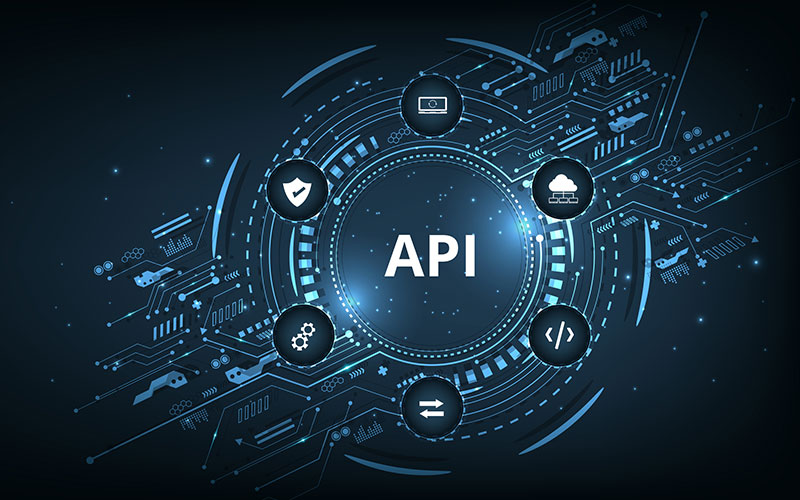Latest opportunities and Challenges for Web developers and digital marketers alike must adapt quickly to the ever-changing demands of modern consumers and the ever-evolving nature of the digital domain. Staying competitive and inventive requires people in these industries to be up-to-date on the newest opportunities and challenges. This blog takes a look at the present state of affairs, drawing attention to important possibilities and major obstacles that web developers and digital marketers encounter.
Opportunities for Digital Marketers
1. Advanced Data AnalyticsData analytics has become a cornerstone for digital marketing. The ability to collect, analyze, and interpret vast amounts of data allows marketers to make informed decisions, target audiences more precisely, and measure the effectiveness of their campaigns. Tools like Google Analytics, HubSpot, and Tableau provide deep insights into consumer behavior, campaign performance, and return on investment (ROI).
2. Personalization and Customer ExperienceWith the advent of machine learning and artificial intelligence, personalization in marketing has reached new heights. Marketers can now create highly personalized content and experiences for their customers. Personalized email campaigns, targeted advertisements, and tailored content based on user behavior are just a few examples of how marketers can enhance customer experience, leading to higher engagement and conversion rates.
3. Influencer MarketingInfluencer marketing continues to be a powerful strategy for reaching target audiences. Collaborating with influencers who have a loyal following can help brands build trust and authenticity. Platforms like Instagram, YouTube, and TikTok have become breeding grounds for influencers who can amplify a brand’s message and drive sales.
4. Video Content and Live StreamingVideo content remains a dominant force in digital marketing. Platforms like YouTube, TikTok, and Instagram Reels have millions of active users consuming video content daily. Additionally, live streaming has gained immense popularity, providing brands with a direct way to interact with their audience in real-time. Webinars, Q&A sessions, and live product launches are just a few ways marketers can leverage this trend.
5. Voice Search OptimizationWith the rise of smart speakers and voice assistants like Amazon Alexa, Google Assistant, and Apple Siri, voice search optimization has become essential. Digital marketers must optimize their content for voice search to ensure their brand is discoverable through voice-activated devices. This includes focusing on long-tail keywords and natural language queries.
Challenges for Digital Marketers
1. Data Privacy and SecurityAs data collection becomes more sophisticated, concerns about data privacy and security are on the rise. Regulations like the General Data Protection Regulation (GDPR) and the California Consumer Privacy Act (CCPA) require marketers to be transparent about data usage and ensure consumer data is protected. Compliance with these regulations can be challenging but is essential to maintain consumer trust.
2. Ad BlockersAd blockers pose a significant challenge for digital marketers. With an increasing number of consumers using ad-blocking software, reaching potential customers through traditional online advertising channels has become more difficult. Marketers must find creative ways to bypass ad blockers and deliver their message, such as through native advertising and influencer partnerships.
3. Algorithm ChangesSocial media platforms and search engines frequently update their algorithms, which can drastically impact a brand’s visibility. Staying up-to-date with these changes and adjusting strategies accordingly is a constant challenge for digital marketers. For example, Google’s algorithm updates can affect SEO rankings, while changes in Facebook’s news feed algorithm can influence organic reach.
Opportunities for Web Developers
1. Progressive Web Apps (PWAs)Progressive Web Apps (PWAs) combine the best features of web and mobile applications, providing a seamless user experience across different devices. They offer offline functionality, fast loading times, and push notifications, making them an attractive option for businesses looking to improve user engagement and retention.
2. AI and Machine Learning IntegrationArtificial intelligence and machine learning are transforming web development. Developers can leverage these technologies to create smarter applications that offer personalized user experiences, predictive analytics, and enhanced security features. AI-powered chatbots, for example, can provide real-time customer support and improve user interaction.
3. API-First DevelopmentAPI-first development is becoming increasingly popular as it allows for greater flexibility and scalability. By focusing on building robust APIs first, developers can ensure that their applications can easily integrate with other services and platforms. This approach facilitates faster development cycles and more efficient collaboration between front-end and back-end teams.
4. Block chain TechnologyBlock chain technology is making its way into web development, offering enhanced security and transparency. Developers can use block chain to create decentralized applications (dApps) that provide secure transactions and data integrity. This is particularly valuable in industries such as finance, healthcare, and supply chain management.
5. Responsive and Adaptive DesignWith the proliferation of different devices and screen sizes, responsive and adaptive design has become a necessity. Web developers must ensure that websites are optimized for a seamless user experience across desktops, tablets, and smartphones. Tools like Bootstrap and Foundation provide frameworks that make it easier to implement responsive designs.
Challenges for Web Developers
1. Cybersecurity ThreatsAs cyberattacks become more sophisticated, web developers face the ongoing challenge of ensuring their applications are secure. Protecting sensitive data, preventing unauthorized access, and mitigating vulnerabilities require constant vigilance and up-to-date knowledge of the latest security practices.
2. Keeping Up with Technological AdvancementsThe rapid pace of technological change means that web developers must continually update their skills and knowledge. New programming languages, frameworks, and tools are constantly emerging, and staying current can be overwhelming. Continuous learning and professional development are essential to remain competitive in the field.
3. Cross-Browser CompatibilityEnsuring that websites function correctly across different browsers can be challenging. Each browser interprets code slightly differently, leading to potential inconsistencies in how a website is displayed or behaves. Developers must rigorously test their applications on various browsers to ensure a consistent user experience.
4. Performance OptimizationAs websites become more complex and feature-rich, maintaining optimal performance is crucial. Slow loading times can lead to higher bounce rates and lower user satisfaction. Web developers must focus on performance optimization techniques such as efficient coding practices, image compression, and leveraging content delivery networks (CDNs).
5. User Experience (UX) DesignCreating an intuitive and engaging user experience is a significant challenge. Developers must work closely with UX designers to ensure that their applications are user-friendly and meet the needs of their target audience. This requires a deep understanding of user behavior, design principles, and accessibility standards.
Conclusion
The digital landscape offers a wealth of opportunities for both digital marketers and web developers, driven by advancements in technology and changing consumer behaviors. However, these opportunities come with their own set of challenges that require continuous learning, adaptation, and innovation. By staying informed about the latest trends and best practices, professionals in these fields can navigate the complexities of the digital world and achieve success in their respective domains.










One Response